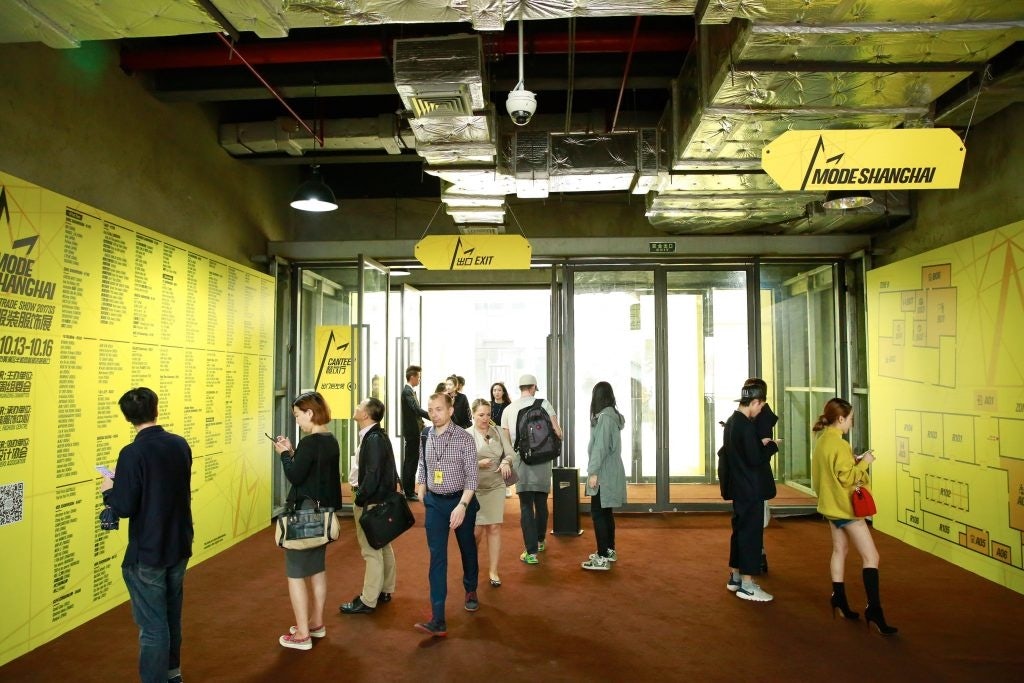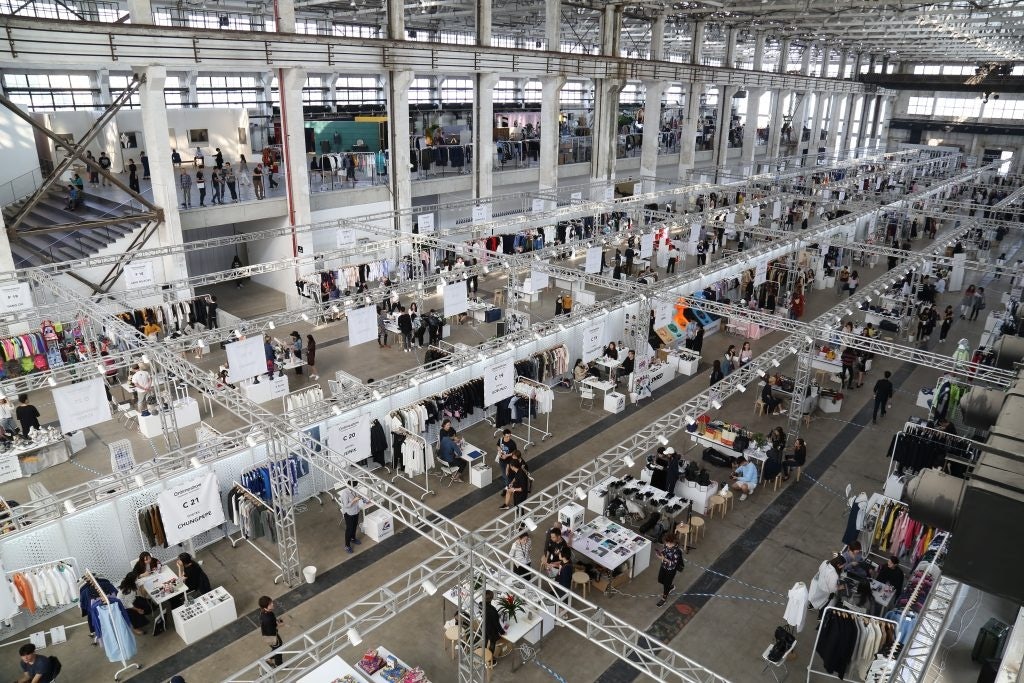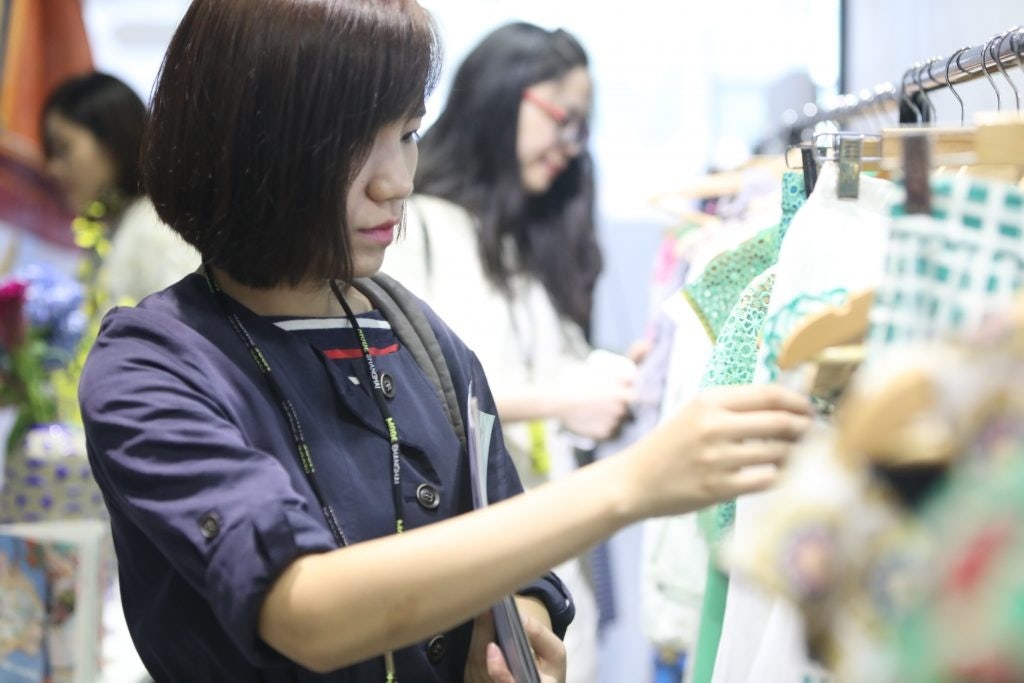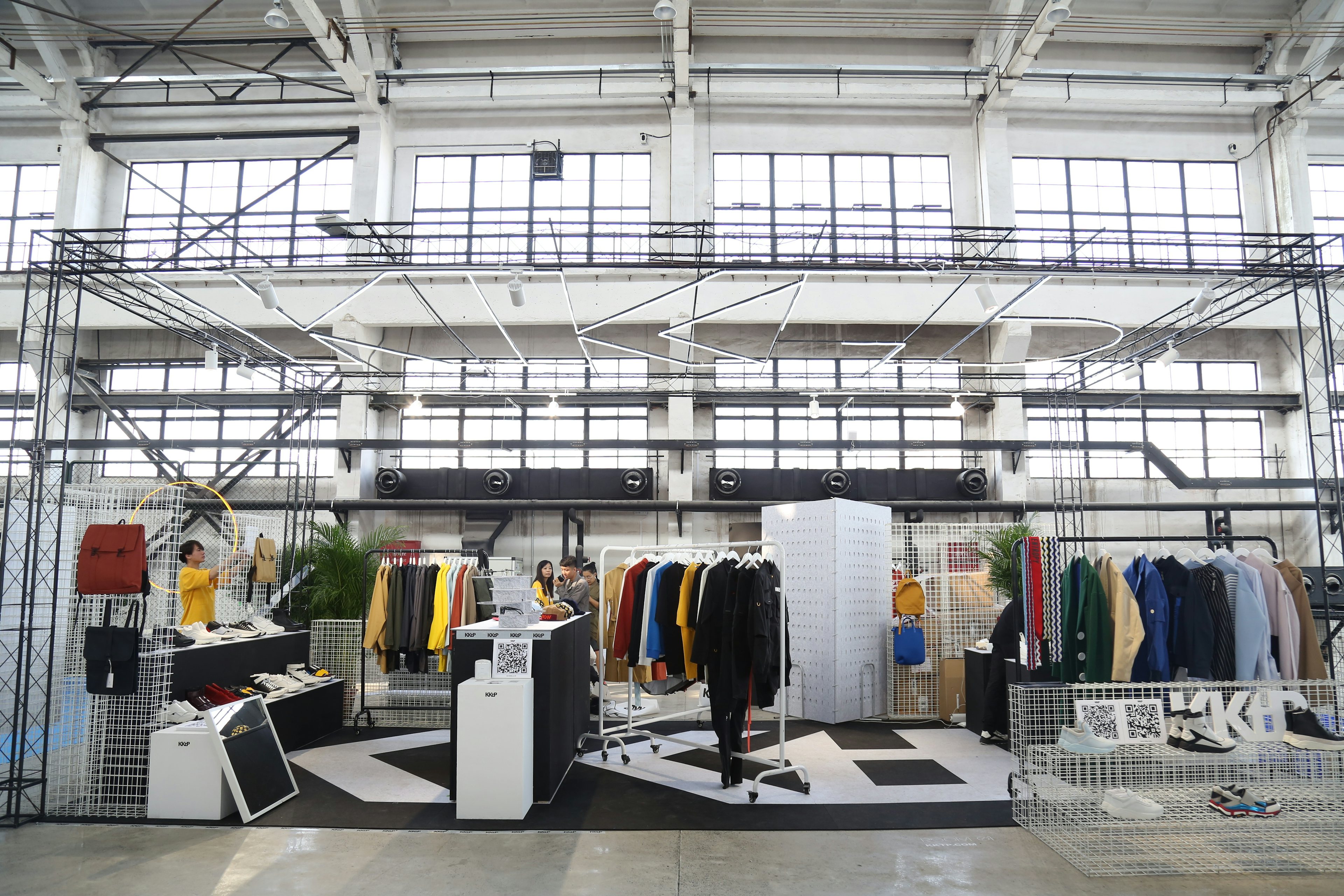It has been a week since buyers finished making their rounds at Shanghai Fashion Week's three major trade shows, but the process for stocking stores for spring/summer 2017 is just getting started. With more buyers than ever coming from mainland China's second-, third-, and even fourth-tier cities, the market potential is apparent, but for some designers and buyers alike, it means charting completely new territory.
At the runway shows and presentations, Dover Street Market and Opening Ceremony buyers were missing from the scene this time, but it didn't seem to diminish any excitement surrounding the event. Shanghai Fashion Week was more buzzing than ever, with new consumer-facing events, its Labelhood platform welcoming more designers, expanding showrooms, and even model Gigi Hadid dropping in on the action. Simon Lock, CEO of online showroom Ordre.com which stocks Chinese brands like Chictopia and Helen Lee, said even the international buyers who did come to Shanghai Fashion Week are going to foremost benefit the Chinese market. “There has become a lot more Chinese consumer appreciation for Chinese designers,” he said at a press event. “The others who are buying for an international showcase are probably going to sell more back here. Consumers love it when their industry gets internationally recognized.”
The quickly rising demand for Chinese designers and open-mindedness outside China's first-tier cities was clear at Shanghai Fashion Week's trade shows, Mode, Ontimeshow, and its latest official trade show partner, The Hub. Mode, which had a face lift since being launched at the autumn/winter 2015 edition of Shanghai Fashion Week, grew from 25 to 32 showrooms and from more than 400 brands to more than 500. It also saw a nearly 30 percent increase in visitors compared to last season, welcoming buyers and agents from all across the mainland. Some came from as far as west and north as Xinjiang and Harbin.

But sheer numbers and growth doesn't tell the whole story. Much of the budding multi-brand scene is coming from outside Beijing and Shanghai, where there is interest in both Chinese and independent global fashion brands, but little experience in the retail process. This gap means it's a potentially complicated experience for new brands trying to come into the mainland.
The designer behind Cafuné, a handbag brand that recently participated in the New York Capsule Show, said they were surprised that buyers that approached them at the Ontimeshow wanted to see if she had the spring/summer 2017 bags in stock right away, whereas in New York, buyers were more familiar with the six-month schedule.

Fan said she was, however, pleased with the set up at Ontimeshow, which allowed designers to showcase their brands in individual stalls, whereas Mode was comprised of 32 showrooms. David Hadida, the CEO of international fashion trade show Tranoi, said at a press event that he was impressed at the professional organization of the Shanghai Fashion Week trade shows, but that “there's always room for evolution.” Hadida said they curate the brands and the small number of showrooms at Tranoi's shows. But at Mode, showrooms from every corner of Greater China with brands from around the world meant it was “sometimes more difficult to read.”
There were showrooms that did stand out at Mode in terms of curation, and one of these was Match Showroom Limited, which had teamed up with the Finnish government to showcase Nordic lifestyle designers. Yongyan Liu, a Match Showroom partner, said that since launching their showroom three years ago, they have grown with their buyers from the mainland. One of the main benefits of working with their team, she said, is gaining visual merchandising tips. This skill is an aspect of multi-brand brick-and-mortar retail that The Hub emphasized when it first showcased its showroom at the Chic Young Blood trade fair in Beijing in 2013.
“I think the market is getting mature; it's just that styling is a new thing in China,” Liu said. “Our mission is to help different brands match with each other and try to help buyers with combining, styling, and crossing brands.”

Navigating into the Chinese market is no doubt challenging for many new designers, but the path is not necessarily clear for Chinese brands with more experience either. “A new-generation designer has the privilege of showing in the showroom where they invite all the top buyers from all the amazing boutiques around the world, but they are not going to be loyal to all the designers—they keep changing things,” said Yang Du, a Chinese designer who came on the scene seven years ago with womenswear featuring bold animal motifs. Her collections have sold well in Italy in the past few years, but now she said she is focusing more on the emerging market of affluent Chinese millennials. To target these consumers, she launched a special collection featuring neon-colored backpacks and cartoon wildlife sweatshirts.
Her accessories and clothes are still stocked in select Shanghai stores, and she receives a lot of personal orders from Beijing, but she is focusing on getting in stores in China's smaller cities. Doing this, she said, is all about finding the right fit and forging the right relationships. Last season, she did an off-schedule catwalk show, but this season, she tested the waters by showcasing her collections on multiple platforms, including GreenCode and Ontimeshow.
“Every season, I still have people from college asking me what showroom I'm going in this season because it's just never perfect, and you never know which one is right,” she said. “You always have to change and learn. It's difficult.”
